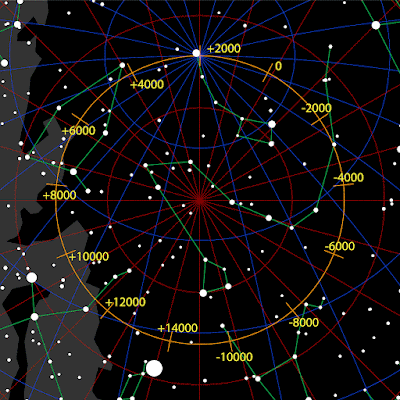There's some weird stuff going on with M87.
M87 is a supergiant elliptical galaxy in the constellation of Virgo. It was discovered and catalogued in 1781 by French astronomer Charles Messier -- the "M" designation in many of the brightest nebulae and galaxies comes from their listing in the Messier catalogue -- but the telescopes of his time weren't good enough to make out much detail. Even through better telescopes it looks like an uninteresting fuzzy blob, mostly because it's 53 million light years away.
This belies its magnitude. It contains over a trillion stars, and is orbited by around fifteen thousand globular clusters (compare this to the Milky Way's paltry two hundred or so), and has a ginormous black hole at its center with a mass 2.4 billion times that of the Sun. It is this black hole that you undoubtedly remember from the famous photographs in March of 2021:
So this is impressive enough as is. But then the astronomers and astrophysicists starting noticing that the black hole itself was behaving... oddly.
Three weeks ago, a team led by Yuzhu Cui of Shanghai Jiao Tong University published a paper in Nature showing that the black hole at the center of M87 was not only spinning (which isn't at all unusual; most black holes spin) but was precessing. If you've ever played with a gyroscope, you've seen precession; get it started spinning, and for a little bit it'll stand upright, but then it starts to wobble, and its spin axis traces out a cone that gets wider and wider as the spin rate goes down because of friction. The Earth precesses, with a period of about 26,000 years, meaning that Polaris wasn't the North Star a few thousand years ago, nor will it be a few thousand years in the future. Twelve thousand years ago, the North Star was the bright star Vega in the constellation Lyra, made famous as the home of the benevolent aliens in the brilliant movie Contact.
This means that the fountain of radiation and debris being shot out along its spin axis is flailing around like the jet from a loose firehose.
Then, a new paper -- still in the preprint stages -- has added another bizarre twist. A team of astrophysicists led by Michael M. Shara, Curator of Astrophysics for the American Museum of Natural History, has found that wherever that wildly-precessing jet nozzle is aimed, there's a higher rate of stars going nova. Novae are explosions less violent than supernovae (those actually blow the unfortunate star to smithereens); they seem to occur mostly when white dwarf stars accrete matter from nearby dust clouds or by stealing it from a binary star partner, triggering instability and a sudden flare-up. Here, though, the mechanism isn't understood. Whether the jet of debris from the black hole is compressing the stars that get in the way and triggering detonation, or if it's simply that the material itself is getting caught by white dwarfs and causing the novae, isn't known.
But it's quite a mental image, isn't it? A careening jet from a spinning supermassive black hole blasts away at stars in its path, and makes them blow up.
Leaves me feeling glad we live in the tranquil outer reaches of our own galaxy. I know the Milky Way has its own massive black hole at the center, but out here in quiet stellar suburbia, we're pretty insulated from all that craziness.
I'm perfectly happy hearing about the wild gyrations of M87 -- from a safe vantage point 53 million light years away.
****************************************
 |


No comments:
Post a Comment